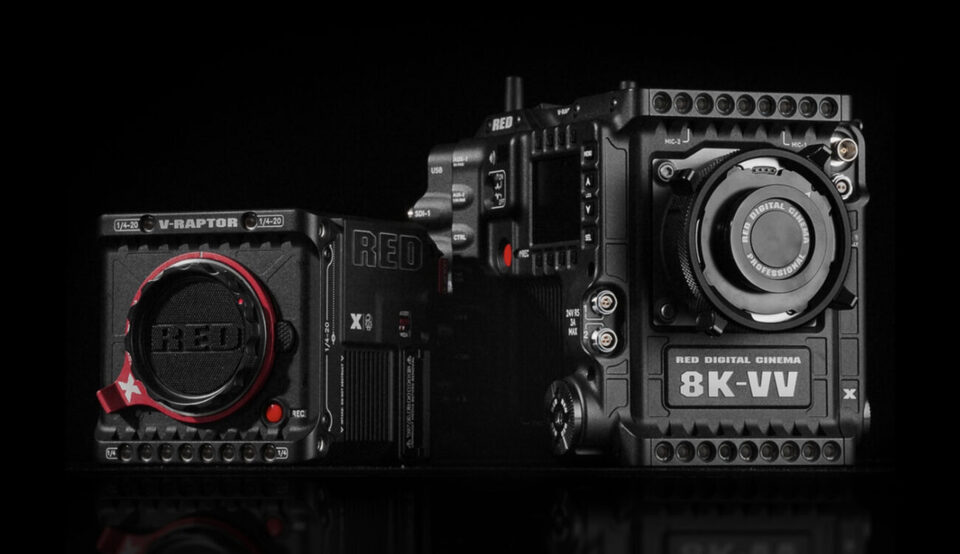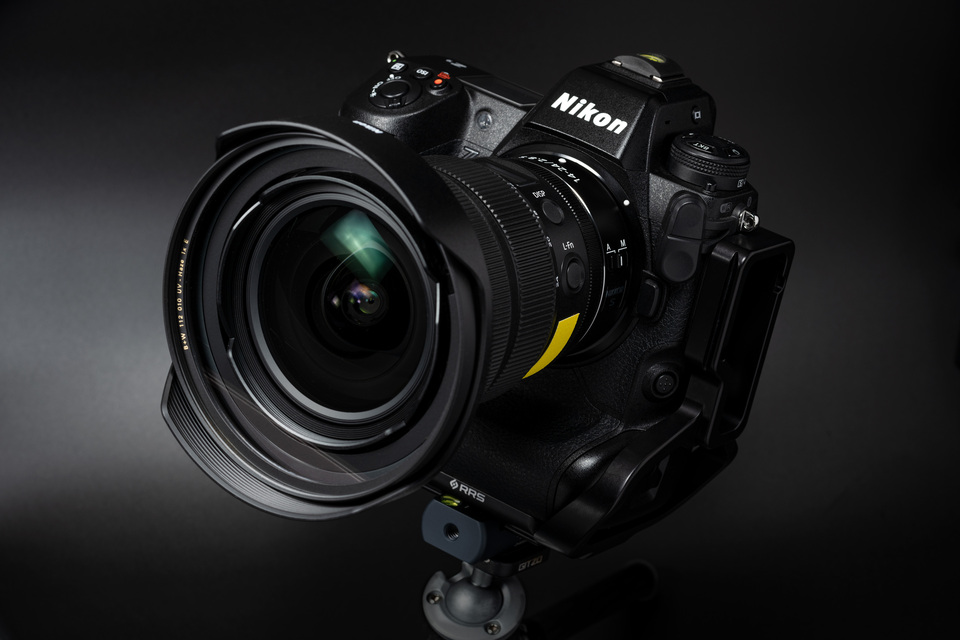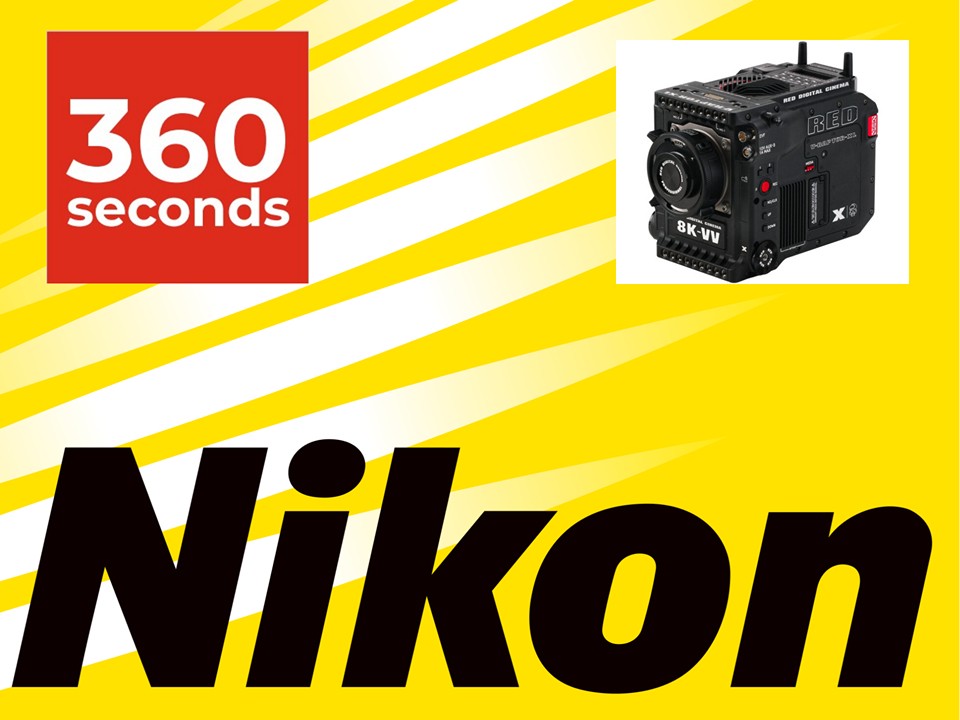Game changer: Nikon’s acquisition of RED featured on 360 Seconds. Broadcast News & Commentary!
360 Seconds. Broadcast News & Commentary is a weekly program on Youtube about the latest equipment for broadcasting and film. Explained by experts – practitioners directly working in the field of cinema and television.
Hosts: Philip Grossman, host and co-producer at Visionaries, and Maria Kholodova.
Production – TKT1957 LLC.
Airing on March 11, 2024.
Maria: Big news, last week, Nikon announced that it was acquiring RED, with the company becoming a subsidiary of Nikon. Nikon’s press release states that the agreement was reached as a result of “mutual desires” of the two companies to meet customers’ needs and offer “exceptional user experiences.” The combination of Nikon’s product development and RED’s cinema cameras will lead to the development of distinctive products in the professional digital cinema camera market, according to Nikon. So, Philip, can you break this down?
Nikon to Acquire RED, Boosting Its Cinema Camera Capabilities
Philip: For us, first, for transparency, I’m a RED shooter. I’ve been shooting RED for over a decade now, and I’m a big fan of RED. I happen to also be a Canon shooter, so this came out of left field, and I can say that everybody was losing their mind when they announced this. It’s the end of RED and so forth. If you look at why companies acquire other companies, there are several basic reasons. One is they want to acquire customers; they have the same industry, they want to acquire customers, or they just want to acquire the tech. In both cases, typically the company that gets acquired eventually disappears. In this case, I think it’s good for both companies. They don’t compete with each other; they both have very distinctive, well-known brands.
They don’t compete with each other; they both have very distinctive, well-known brands
Nikon is the third-largest camera manufacturer in digital SLRs and point-and-shoots, behind Sony and Canon being the number one, but they don’t have a cinema camera brand. The RED camera doesn’t have a still, although if you’re familiar with RED, they call them the DSMC series or DSMC 3 which is the latest, which stands for Digital Stills Motion Camera. So they are geared towards still imagery; in fact, I use them a lot for stills because I can capture a 35-megapixel image, which is an 8K image at 120 frames a second, which is faster than any stills camera out there.
So I think both companies are going to grow because of the technology transfers between the two
So I think both companies are going to grow because of the technology transfers between the two. Nikon is going to get an amazing sensor; Nikon does not build its own sensors. RED does design and build its own sensors. Nikon typically buys from Sony or has them contract manufactured, so this is great for Nikon. They’re going to be able to theoretically create a stills camera that is 35 megapixels or greater, 16-bit raw. Today stills cameras are 14-bit raw max, and they’re going to be able to do that with the RED color science. The fact that the RED sensors do 17 stops of dynamic range, typical stills cameras are around 13-14 stops dynamic range. And of course, RED just released their highlight protection, which is a growth out of the old HDRx technology, which is going to enable theoretically Nikon to have a 22 stop dynamic range stills camera. They can also shoot 8K RAW videos. On the RED side, RED has in the last two to three years with the DSMC 3 bodies really gotten much better at autofocus, which typically isn’t required in a motion cinema camera. Cinema cameras usually has a focus puller, but as they move more into live television technology, a lot more documentarians are buying the cameras because they’ve been able to get them lower in price.

Now they’re going to get this autofocus technology, and these are all suppositions on my part, but I would assume they’re going to get the autofocus technology from Nikon, which will be fantastic. They also get a huge manufacturing presence that Nikon has. RED cameras tend to be FPGA based, not ASIC based. ASICs are very expensive to manufacture, and they take two years typically, and then you have to sell a lot of cameras to pay that price. Well, Nikon makes thousands, tens of thousands, hundreds of thousands of cameras using these ASICs, so now RED will potentially be able to use the same ASICs that are in the Nikon cameras across their line as well, which will reduce the cost, reduce the size, and increase the power optimization in those cameras. So I think all around, it’s a great win. I personally am excited. I have been a Canon shooter; I love Canon stills cameras. I have a lot of money invested in Canon glass, and so it’s always a concern, but Nikon, in their latest cameras, they’ve adapted to what they call the Z mount, and there are adapters that allow you to go from EF to Z mount, so that’ll make that transition for me, at least a lot smoother, i.e., less expensive.
RED’s not going away
So I’m excited to see this. This is probably one of the biggest stories, I’d say, in the last five years in the camera industry, where you’ve got these two giant companies coming together. I don’t think it’s a bad thing at all. RED’s not going away. I’d say the biggest thing that RED has to worry about is Nikon management, which is a Japanese company, and how that may affect RED from a cultural perspective internally, but I think they’ll keep the current management and bring all the right people in, and I’m excited to see what happens in the next 30 days for the closing and the next five years.

Maria: That’s all the time we have today. Many thanks to our expert, Philip. And don’t forget to comment on the news we’ve discussed. See you next Monday at the same time!
360 Seconds. Broadcast News & Commentary
The weekly show, focusing on the latest products and solutions in the global TV and film industry, features insights and analysis from top experts. Released every Monday within the TKT1957 network, the program can be found on the YouTube channel, social media groups, and the tkt1957.com website.
“360 Seconds. Broadcast News & Commentary” is versatile and offers a wide range of formats to captivate our audience. Here are some of the key elements you can expect in our productions:
Live Streaming: We host weekly live broadcasts, allowing our presenters to interact with the audience in real-time. This enables us to answer questions, engage with comments, and delve deeper into trending topics.
Interviews: We invite experts, influencers, and colorful personalities to share their insightful insights and experiences on a wide range of topics.
Provocative Discussions: Our content sparks thoughtful discussions that address current events and trending topics. We promote constructive dialogue among our viewers.
Product Reviews: We provide candid and unbiased reviews of various film and broadcast products and services, enabling our audience to make informed decisions.
We highly value the opinions of our viewers and actively encourage their participation in our programs. Feel free to chat with us during broadcasts, comment on our videos, and suggest topics or guests you’d like to see in our productions.
Our programs follow a consistent release schedule, with new content debuting every Monday. Don’t forget to subscribe to our channel and turn on notifications so you never miss an episode!
The program can be watched every Monday at 11:00 am ET by clicking on any of these links:
Engage with the content, view the episodes, and participate in the conversation by leaving your questions in the comments section!










